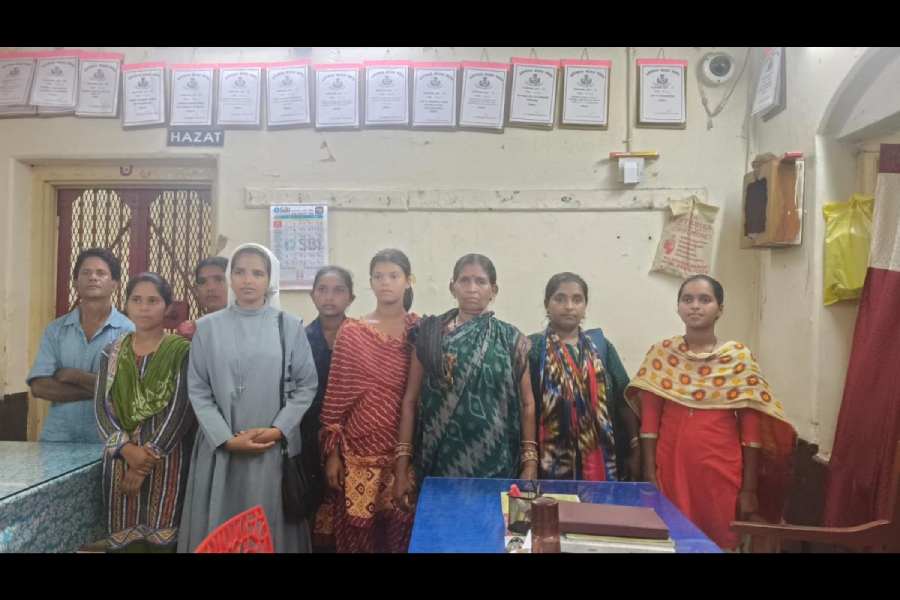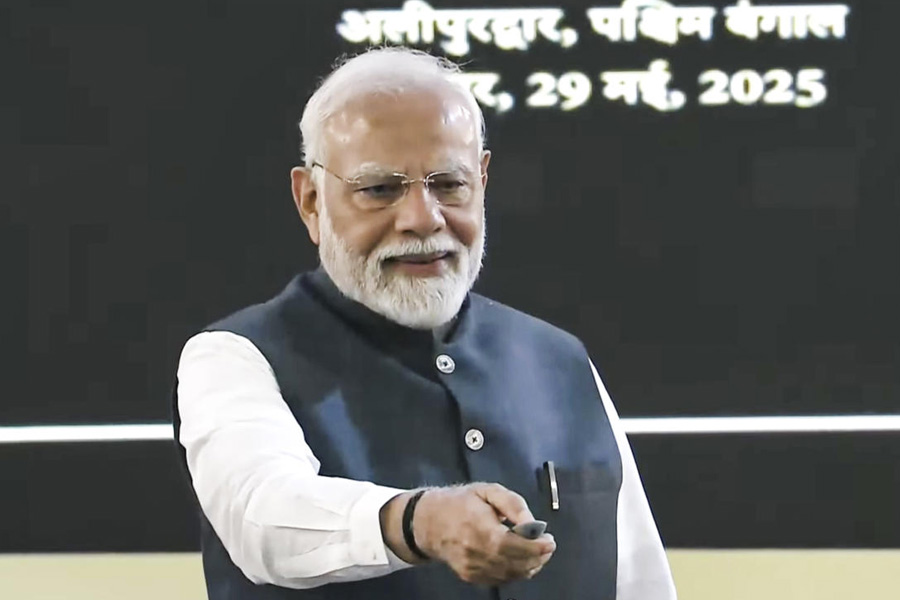
The Ganga is shifting its course but that is not stopping Chhath devotees from taking the alternative route to perform the rituals with equal piety.
Between Digha and Patna Medical College and Hospital, the river has shifted further north, so devotees have to walk a few more kilometres to reach it.
Hundreds of people, especially those living in the western parts of Patna, are choosing to observe Chhath away from the holy river. The alternatives are 23 large ponds and water bodies within the precincts of the city.
These are being cleaned and spruced up on a war-footing to ready them for devotees, who will converge there to perform the rituals on November 6 and 7. Of these 23 ponds and water bodies, 12 are in the New Capital Area of Patna Municipal Corporation, eight are in Patna City and three in Kankerbagh.
The main ones among them are Kachchi Talab, Bihar Military Police pond, Manickchand, the lake at Sanjay Gandhi Biological Park, and the Gardanibagh pond, which stretches from road number 10 to 17.
The importance of these water bodies could be gauged from the fact that an estimated 8,000 worshippers throng the Patna zoo and Bihar Military Police ponds to pay obeisance to the Sun God. Around a lakh devotees are expected to gather at the 23 ponds and water bodies and also a few smaller ones in Patna.
The move from the traditional Ganga to water bodies has not been overnight, but gradual over the past few years.
People attribute the main reasons behind this to the shift of the Ganga’s course from Patna and a large number of people from rural areas coming to Patna to perform the rituals along the banks of the holy river.
“Performing rituals on the banks of the Ganga is considered the best way to observe Chhath. However, the shift of the river from Patna has put paid to those plans. Devotees will have to walk two to three kilometres from the main ghats towards the west of Patna to reach the river, which will be an added suffering for those on fast. My family has thus thought of observing the festival at the Bihar Military Police pond,” said advocate Shailesh Kumar Jha.
He said the pond is well-managed and concrete steps lead to the water. It has ample space for the devotees to keep their heavy fruit-laden baskets and wait for their turn to make offerings to the Sun God.
“The advantage is that the Chhath puja samiti gets the cleaning and lighting of the pond area done, making it comfortable for people to observe the festival,” Shailesh added.
Sanjay Gandhi Biological Park, popularly known as Patna zoo, is also planning to throw its gates open to the devotees. A senior official said: “Preparations are afoot, unless the Central Zoo Authority objects to it.” He said devotees will not have to buy tickets.
“Additional lights are being provided. The artificial lake is being cleaned and the paths leading to it are also being sanitised. Over 75 employees will be deployed to look after the arrangements and boats will be used to patrol the waters for the safety of the people. We will also ensure crackers are not burst on the occasion,” the zoo official said.
The Patna Municipal Corporation is sprucing up the Kachchi Talab in Gardanibagh, as it is a landmark for Chhath worshippers.
“Kachchi Talab has always been a nice place for observing Chhath. We thought of performing the rituals here to avoid the crowd of lakhs of people who come to the banks of the Ganga. This is worship and why should we jostle for space? There should be peace of mind while performing a puja,” said Anisabad resident Mihir Singh, a government employee.
Old-timers of the city said the Adalat Ghat stampede during the 2012 Chhath, in which 18 people lost their lives and hundreds were injured, served as an eye-opener for the people. Thus, many chose to shift to other locations to avoid the crowd.
“After the stampede, there has also been a sharp rise in the number of people performing Chhath on rooftops or kitchen gardens. They just have to make a small and shallow tank and fill it with water. It is more convenient than worshipping amid a sea of devotees. It is a good sign and shows the willingness of people to adapt to changing circumstances,” said social activist Himmat Verma.











